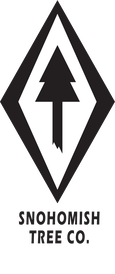|
Check out these resources if you have questions about on tree laws in the Puget Sound area. There’s also a mini dictionary below of terms you may come across that you aren’t familiar with. State Laws
RCW 64.12.030 --- Injury to or removing trees, etc.—Damages - Info on damage or removal of trees on another’s property WAC 352-28-010 --- Cutting, collection and removal of natural resources - Info on the removal of trees in state parks County Laws
Snohomish County
13.50.090 --- Conditions--Tree trimming, removal and replacement (C9) - Info on tree services that must be carried out within the opened right-of-way. Hazardous Tree Removal - Info for dealing with hazardous trees in various situations, including trees on or near your property and in protected areas. FAQ’s – Snohomish County Planning and Development Services - FAQ’s that include info on significant tree and critical area restrictions, permitting, tree canopy requirements and hazardous trees. King County
Forest Practices - Info on growing, harvesting and processing timber and classes of forest practice. Zoning - Includes info on tree landscaping, retention, and a few tree definitions (hazard trees, broadleaf trees and significant trees). Skagit County
Clearing, Grading, Grubbing, and Forest Practices = Info on land clearing for property owners. Hazard Tree Removal - Info on hazard tree removal in critical areas City Laws
Bainbridge Island
Everett
Monroe
UDR CHAPTER 22.86 - Regulations on land clearing and forest practices UDR Chapter 22.46 -Landscaping Standards Kirkland
UDR CHAPTER 22.86 - Regulations on land clearing and forest practices UDR Chapter 22.46 -Landscaping Standards Lake Stevens
Chapter 14.76 - SCREENING AND TREES - Retention and Protection of Large Trees Chapter 14.08 - Basic Definitions and Interpretations - Includes tree-related definitions Chapter 14.88 - Critical Areas - Includes info on tree removal in critical areas Lynnwood
Tree Removal Regulations - has info and links for:
Seattle
Tree Protection Code is the main page for info on Seattle city tree regulations. Includes info or links for:
Snohomish
Ordinance 1917 - Info on Significant Trees and Tree Retentions Do I need City approval to cut down a tree on my property? Definitions of Related Terms
Below are some definitions of terms in the legal world of trees that you might not be familiar with.
Significant Tree
Per King County: “an existing healthy tree that is not a hazard tree (i.e. a tree that does not have a high probability of imminently falling due to a debilitating disease or structural defect) and that, when measured four and one-half feet above grade, has a minimum diameter of: A. Eight inches for evergreen trees; or B. Twelve inches for deciduous trees. (Ord. 13576 § 1, 1999).” Per Bainbridge Island: “
Critical Area
Per King County: “Critical areas are lands with natural hazards or lands that support certain unique, fragile or valuable resource areas.” Per Snohomish County "Critical area" means the following areas:
Native Growth Protection Area (NGPA)
Per Snohomish County: “A Native Growth Protection Area (NGPA), or Critical Area Protection Area (CAPA), is the Snohomish County Code designation for permanently protected property that contains a critical area, a critical area buffer or both. Broadleaf Tree
Per Merriam Webster: “any deciduous tree (such as the maple or oak) or any of certain evergreen trees distinguished from trees bearing needlelike leaves (such as most conifers) by having relatively broad flat leaves” Per King County: “a tree characterized by leaves that are broad in width and may include both deciduous and evergreen species. (Ord. 10870 § 64, 1993).” Tree Hazard
Per King County: “21A.06.1331 Tree, hazard. Tree, hazard: any tree with a structural defect, combination of defects or disease resulting in structural defect that, under the normal range of environmental conditions at the site, will result in the loss of a major structural component of that tree in a manner that will:
Per Skagit County: “Hazard trees: those trees with a structural defect, combination of defects or disease resulting in a structural defect that, under the normal range of environmental conditions at the site, will result in the loss of a major structural component of the tree in a manner that will:
Per Tacoma: “What is a hazard tree? A hazard tree exists when the sum of the risk factors assessed equals or exceeds a determined threshold of risk. Below that threshold, the tree is not considered to be a hazard. How are the risk factors assessed? Risk factors are assessed during a tree risk assessment performed by a Certified Tree Risk Assessor.” We're not legal experts and this is information is not to be taken as advice, only as a resource to help you with your research. Once you are ready to get started, we'd love to help you out.
|
SNOHOMISH TREE COMPANYFollow our blog for industry insights, company updates, and tips for working with trees. Archives
February 2022
Categories |

 RSS Feed
RSS Feed
